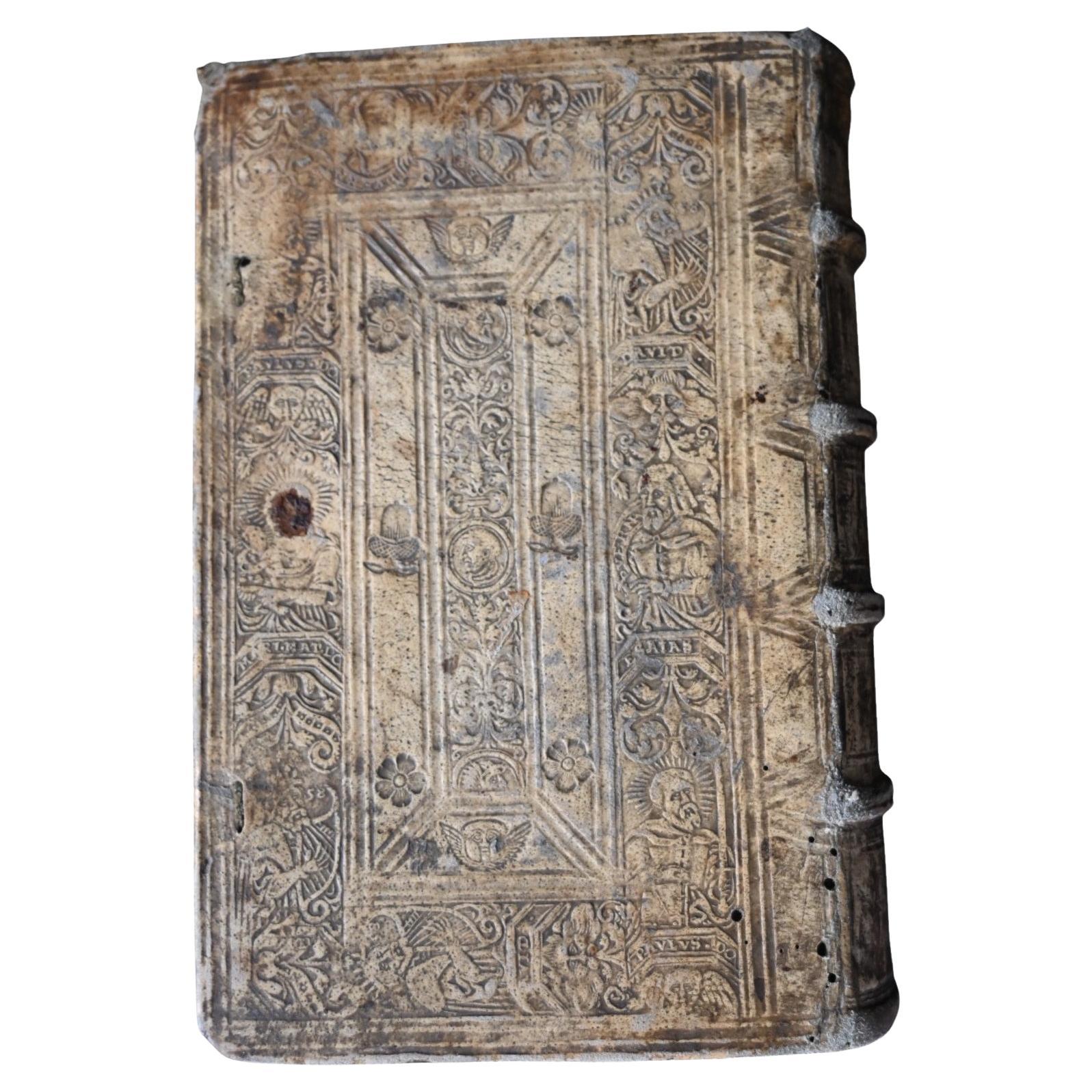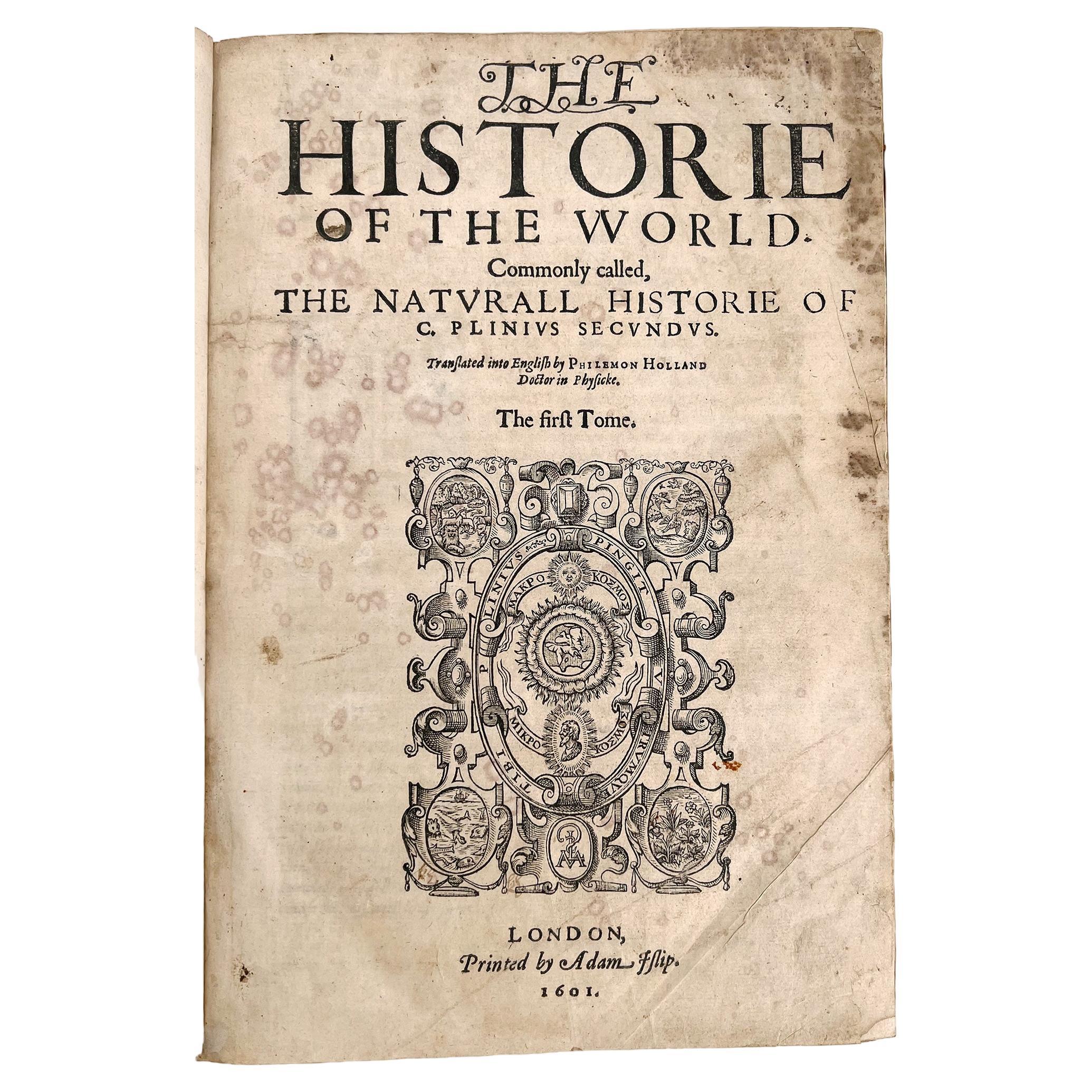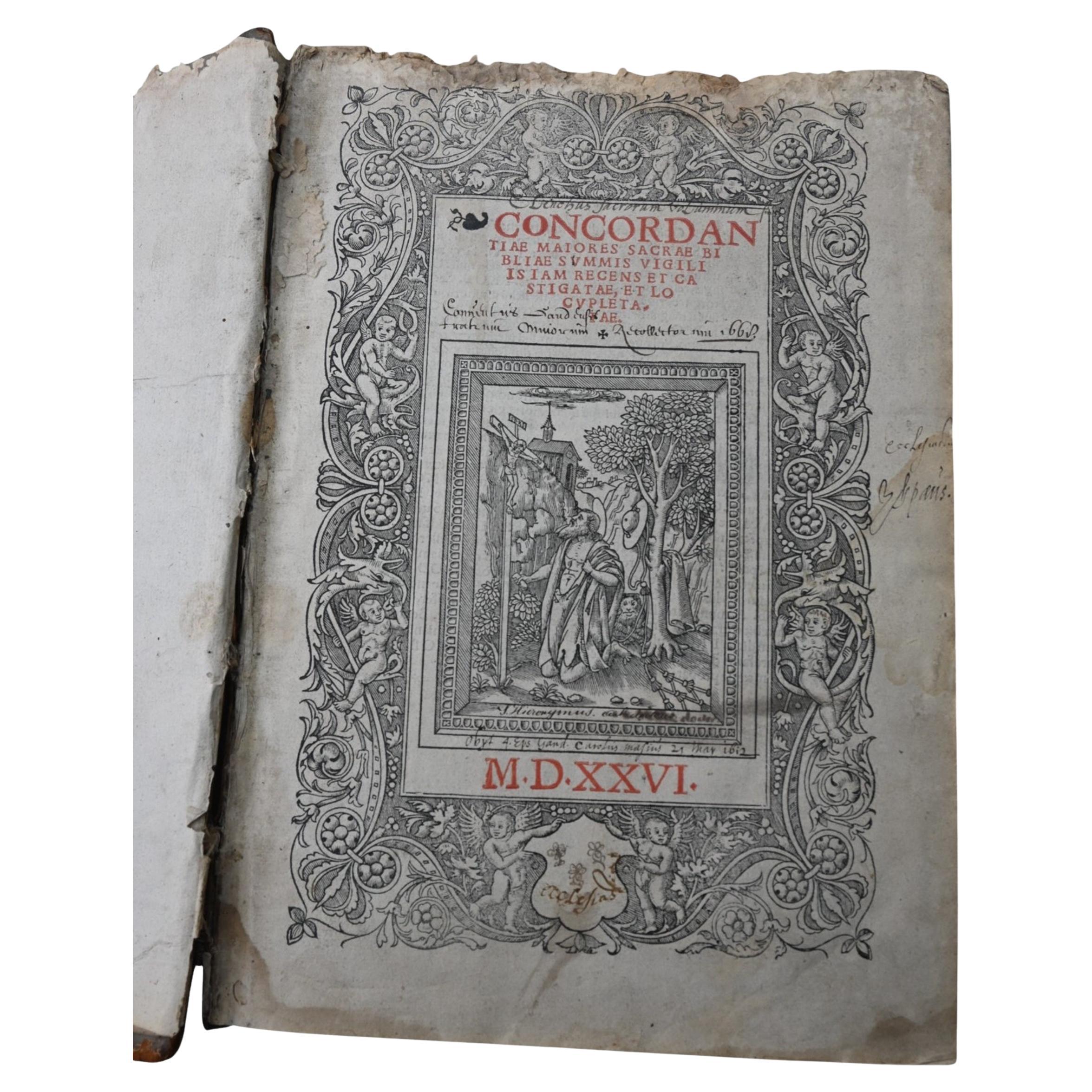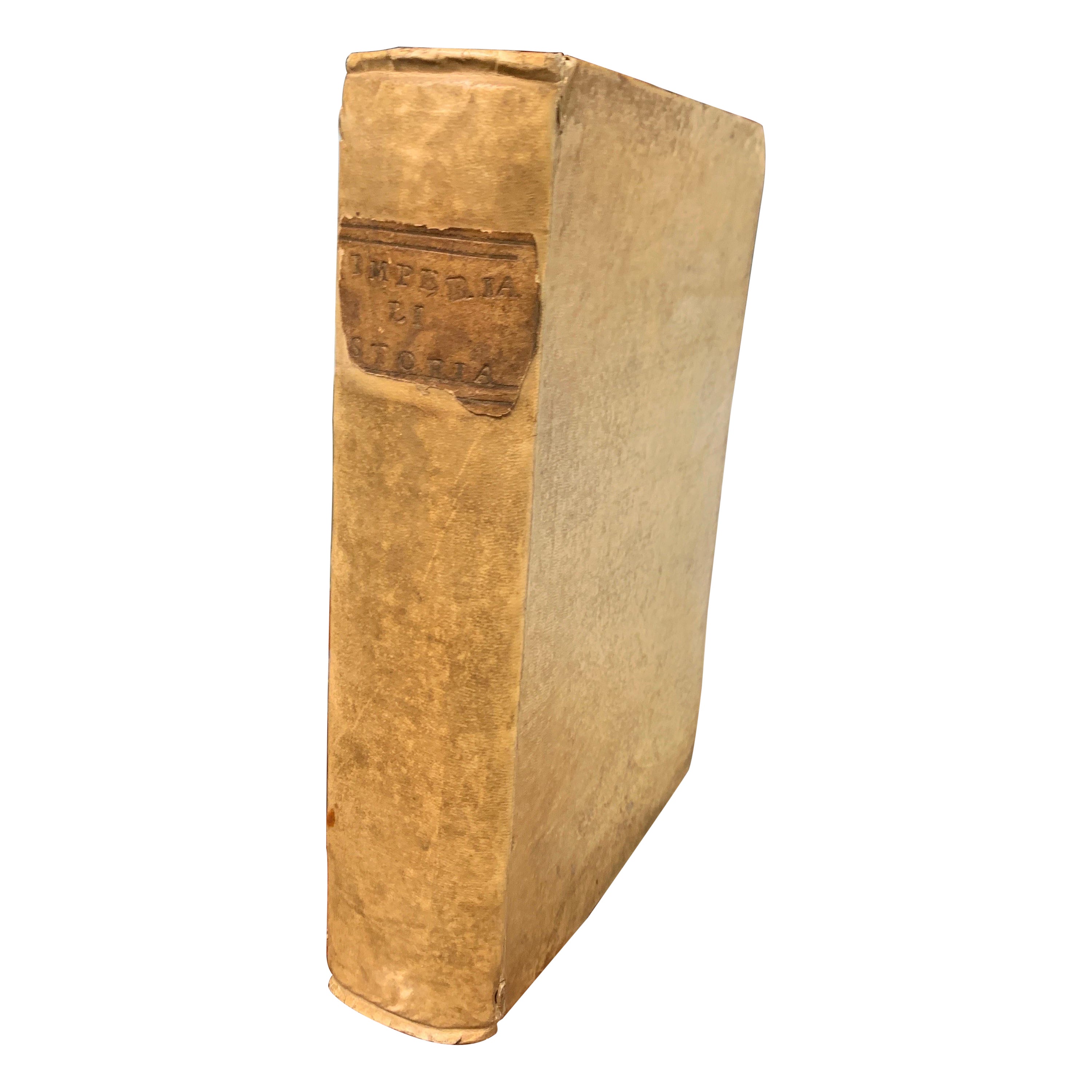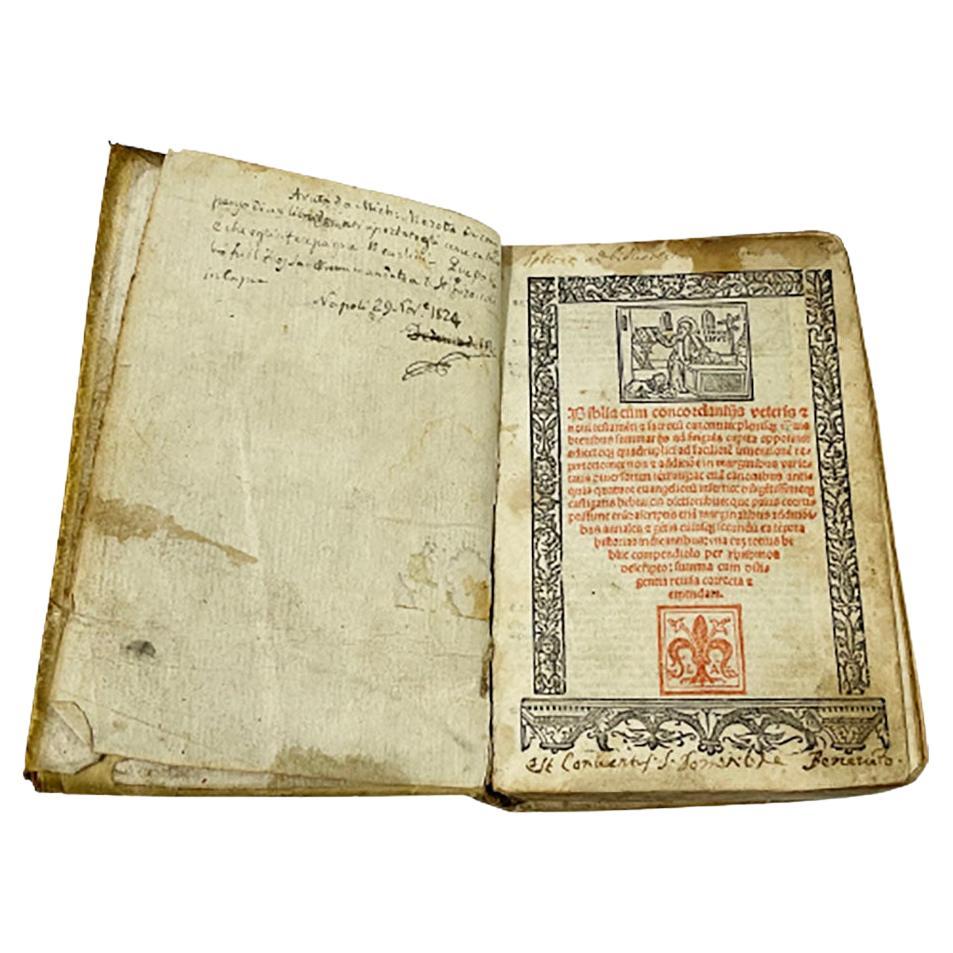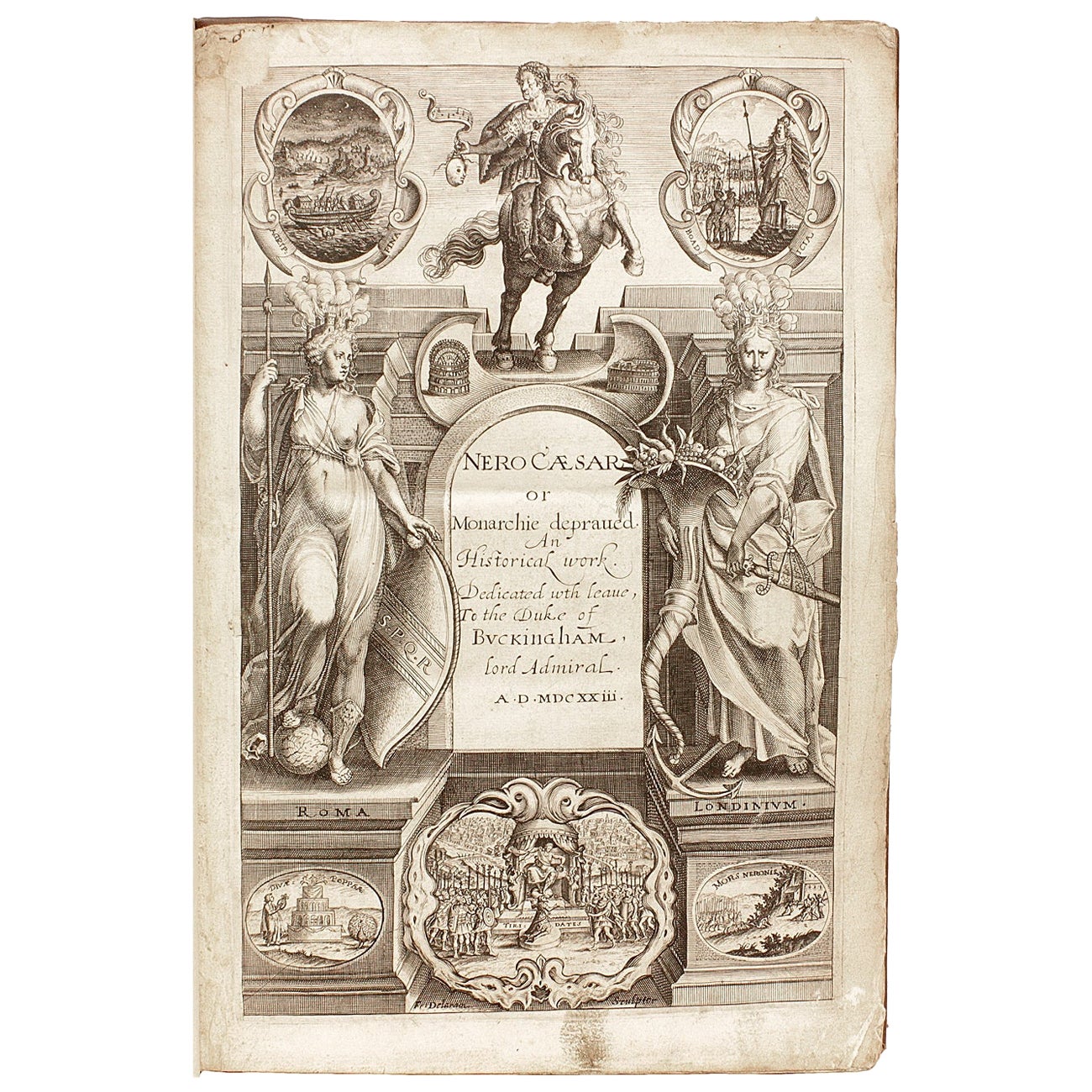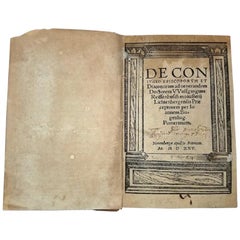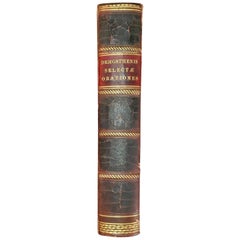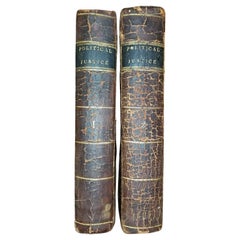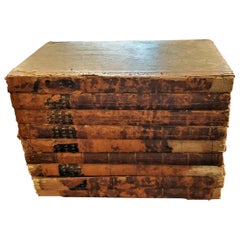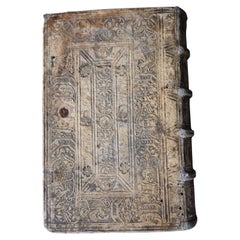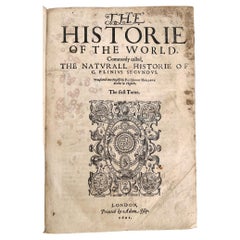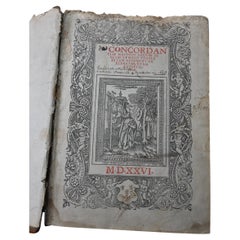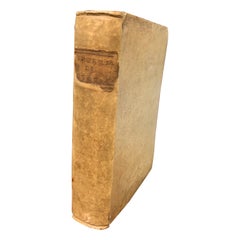Items Similar to C Plinii Caecilii Secundi Epistolae Et Panegyricus, 1712
Want more images or videos?
Request additional images or videos from the seller
1 of 15
C Plinii Caecilii Secundi Epistolae Et Panegyricus, 1712
$1,250
£943.89
€1,087.72
CA$1,764.28
A$1,945.08
CHF 1,017.60
MX$23,862.52
NOK 12,809.61
SEK 11,979.01
DKK 8,123.15
About the Item
Presenting a very rare and ‘old’ antiquarian book, C Plinii Caecilii Secundi Epistolae et Panegyricus dated 1712.
Published by Johannus Minellii in 1712.
Covered and bound in velum.
In Latin, by Pliny The Younger.
Signed by a previous owner: ” Carl Frid 1734?
This is your chance to own something from before the foundation of the USA …… truly antique!
Gorgeous piece of history and very, very rare!
- Dimensions:Height: 5.5 in (13.97 cm)Width: 3.5 in (8.89 cm)Depth: 2.75 in (6.99 cm)
- Style:Classical Roman (In the Style Of)
- Materials and Techniques:
- Place of Origin:
- Period:
- Date of Manufacture:1712
- Condition:Wear consistent with age and use. Minor losses. Minor structural damages. Minor fading. In good condition for its age. Some foxing and loss of half of the first page's illustration. Loose binding.
- Seller Location:Dallas, TX
- Reference Number:1stDibs: LU3978117698311
About the Seller
4.9
Gold Seller
Premium sellers maintaining a 4.3+ rating and 24-hour response times
Established in 2015
1stDibs seller since 2018
393 sales on 1stDibs
- ShippingRetrieving quote...Shipping from: Dallas, TX
- Return Policy
Authenticity Guarantee
In the unlikely event there’s an issue with an item’s authenticity, contact us within 1 year for a full refund. DetailsMoney-Back Guarantee
If your item is not as described, is damaged in transit, or does not arrive, contact us within 7 days for a full refund. Details24-Hour Cancellation
You have a 24-hour grace period in which to reconsider your purchase, with no questions asked.Vetted Professional Sellers
Our world-class sellers must adhere to strict standards for service and quality, maintaining the integrity of our listings.Price-Match Guarantee
If you find that a seller listed the same item for a lower price elsewhere, we’ll match it.Trusted Global Delivery
Our best-in-class carrier network provides specialized shipping options worldwide, including custom delivery.More From This Seller
View AllRARE ‘De Conjugio Episcoporum et Diaconorum’ by Johannes Bugenhagen – 1525
Located in Dallas, TX
PRESENTING AN EXTREMELY RARE EDITION hardback copy of De Conjugio Episcoporum et Diaconorum ad uenerandum Doctorem VVolfgangum Reissenbush monasterii Lichtenbergensis Prae ceptorem ...
Category
Antique 16th Century German Renaissance Books
Materials
Leather, Paper
Demosthenis Selectae Orationes by Richard Mounteney 1791 7th Edition
Located in Dallas, TX
Presenting a fabulously rare antiquarian book from 1791, namely, Demosthenis Selectae Orationes by Richard Mounteney 1791 7th Edition.
Leather Spine in very good condition. Leathe...
Category
Antique 18th Century English Classical Greek Books
Materials
Leather, Paper
1st US Edition of ‘Enquiry Concerning Political Justice’ by W Godwin 1796
Located in Dallas, TX
PRESENTING AN EXTREMELY RARE FIRST US EDITION hardback copy of “Enquiry Concerning Political Justice and Its Influence on Morals and Happiness by William Godwin, First American from ...
Category
Antique Late 18th Century American George III Books
Materials
Leather, Paper
John Bull Original Annuals from 1820-1829
Located in Dallas, TX
Presenting a set of 9 volumes, leather bound John Bull yearly annuals.
All the weekly newspaper publications of John Bull for the years 1820-1829 (Inclusi...
Category
Antique Early 19th Century English George III Books
Materials
Paper
$9,800 / set
'Bibliomania or Book Madness' by Thomas Frognall Dibdin, 1842
Located in Dallas, TX
PRESENTING AN EXTREMELY RARE EDITION hardback copy of ‘Bibliomania or Book Madness; A Bibliographical Romance. Illustrated with Cuts’, by Thomas Frognall Dibdin, D.D. New and Improve...
Category
Antique Mid-19th Century English Early Victorian Books
Materials
Paper
Rare 19C Portois & Fix Viennese Cabinet
By Portois & Fix
Located in Dallas, TX
PRESENTING A STUNNING and RARE 19C Portois & Fix Viennese Cabinet.
Made by the famous and highly desirable maker, ‘Portois & Fix’ in Vienna, Austria ...
Category
Antique Late 19th Century Austrian Belle Époque Cabinets
Materials
Brass, Ormolu
$20,800 Sale Price
46% Off
You May Also Like
D. Ioannis Chrysostomi Archiepiscopi Constantinopolitani 1556
Located in Bilzen, BE
D. Ioannis Chrysostomi archiepiscopi Constantinopolitani Enarrationes in divi Pauli epistolas, ad Timotheum II., Titum, Philemonem, & HebræosD.IOANNIS CHRYSOSTOMI ARCHEPISCOPI CONSTA...
Category
Antique 16th Century Belgian Renaissance Books
Materials
Paper
Pliny, Gaius Secundus: HISTORIE OF THE WORLD
Located in Middletown, NY
A rare and complete first English edition of this seminal work.
Pliny, Gaius Secundus / Plinius, Gaius Secundus (23-79 AD) / Translated by Philemon Holland.
The Historie of the Wor...
Category
Antique Early 17th Century English Books
Materials
Leather, Paper
Concordantiae Maiores Sacrae Bibliae – 1526 – Froben Printing Company
Located in Bilzen, BE
Concordantiae Maiores Sacrae Bibliae – 1526 – Froben Press – Original Binding
Full Title
Concordantiae Maiores Sacrae Bibliae, summis vigiliis iam recens et castigatae et locupletat...
Category
Antique 16th Century Renaissance Books
Materials
Leather, Paper
Italian Rare Edition of Historia Dell'Armi Imperiali from Venice 1687
Located in Sofia, BG
Rare antique Italian edition of HISTORIA DEGL'AVENIMENTI DELL'ARMI IMPERIALI CONTRO A'RIBELLI, ET OTTOMANI published in Venice at 1687.
Italy
Category
Antique Late 17th Century Italian Books
Materials
Paper
Biblia Cum Concordantijs Veteris & Novi Testamenti & Sacrorum Canonum, 1519
Located in Delft, NL
Biblia cum concordantijs veteris & novi testamenti & sacrorum canonum, 1519
A Bible by auteur Alberto da Castello, printed by Luca-Antonio Giunta, Latin Anno 1519, Venice
27-532-55 pages
First alphabetical list- Tabula Tertia, after that comes the 1st full page woodblock plate.
This title page in red and black with a surrounded frame in woodcut. Above the page “San Jerome” illustrated and below the page the printers mark “ Giunti’s Mark” from the family of printers in Florentine. The initials L A of Luca-Antonio Giunta.
After this page starts a full-page woodcut illustration after that are 3 pages not numbered and then starts numbered page 2 – 532
On page 401 is also a full-page woodcut plate
There are ca 345 small woodcuts...
Category
Antique 16th Century Italian Books
Materials
Paper
Edmund BOLTON. Nero Caesar, or Monarchie Depraved - FIRST EDITION - 1624
Located in Hillsborough, NJ
AUTHOR: BOLTON, Edmund.
TITLE: Nero Caesar, or Monarchie Depraved. An Historical Worke.... By the Translator of Lucius Florus.
PUBLISHER: London: by T. S. for Thomas Walkly, 1624....
Category
Antique 1620s British Books
Materials
Leather
